
Fun Facts About Multi-Toed Cats for Polydactyl Cat Day
Since our dear polydactyl cat, Otto joined our family we are keen to celebrate and do a deep dive. After all, as cat lovers, we’re always eager to celebrate the quirks that make our feline friends so special. Here’s all you need to know and fun facts about polydactyl cats.
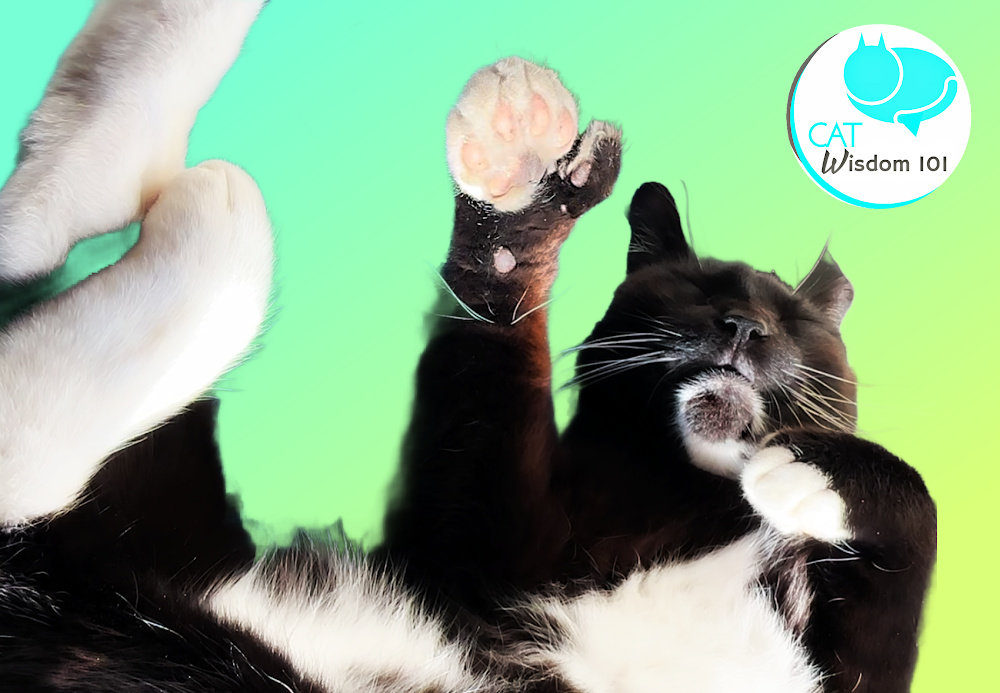
And on May 12th, we have the purrfect opportunity to honor a genetic trait that adds to the adorableness of certain kitties – polydactyly!
What is Polydactyly?
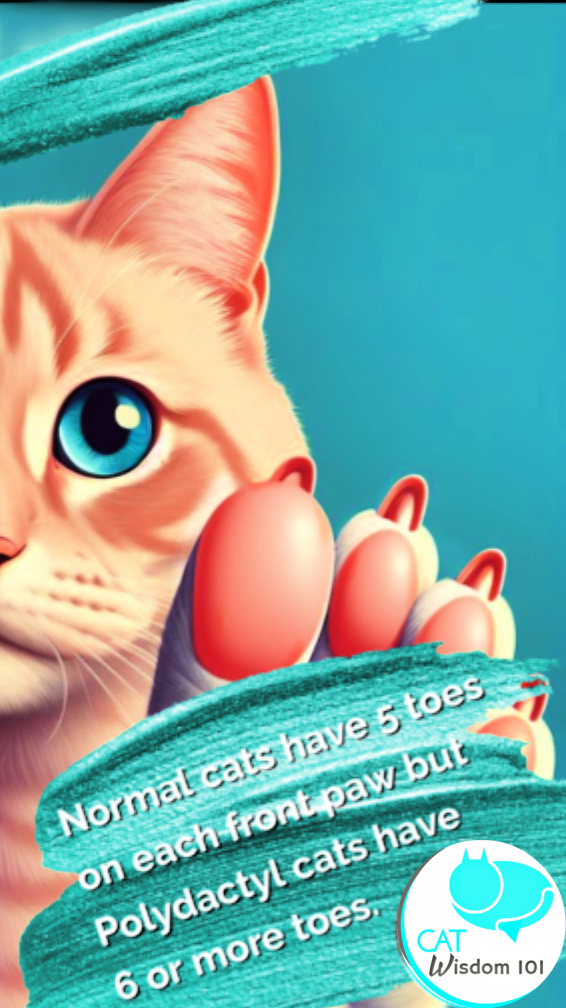
Polydactyly is a natural mutation that causes cats to be born with more than the normal number of toes on one or more of their paws. While most cats have five toes on each front paw and four toes on their back paws, polydactyl cats can have anywhere from 6 to 8 toes or even more!
These extra digits are sometimes referred to as “thumb” toes, giving polydactyl kitties the charming look of having opposable thumbs.
Of course, their extra toes don’t actually work like human thumbs, but they do make their paws look just a bit more human-like and dexterous.
When Otto is sitting, his toes splay out and it reminds me of a ballet dancer in first position or plié.
A Bit of Polydactyl History
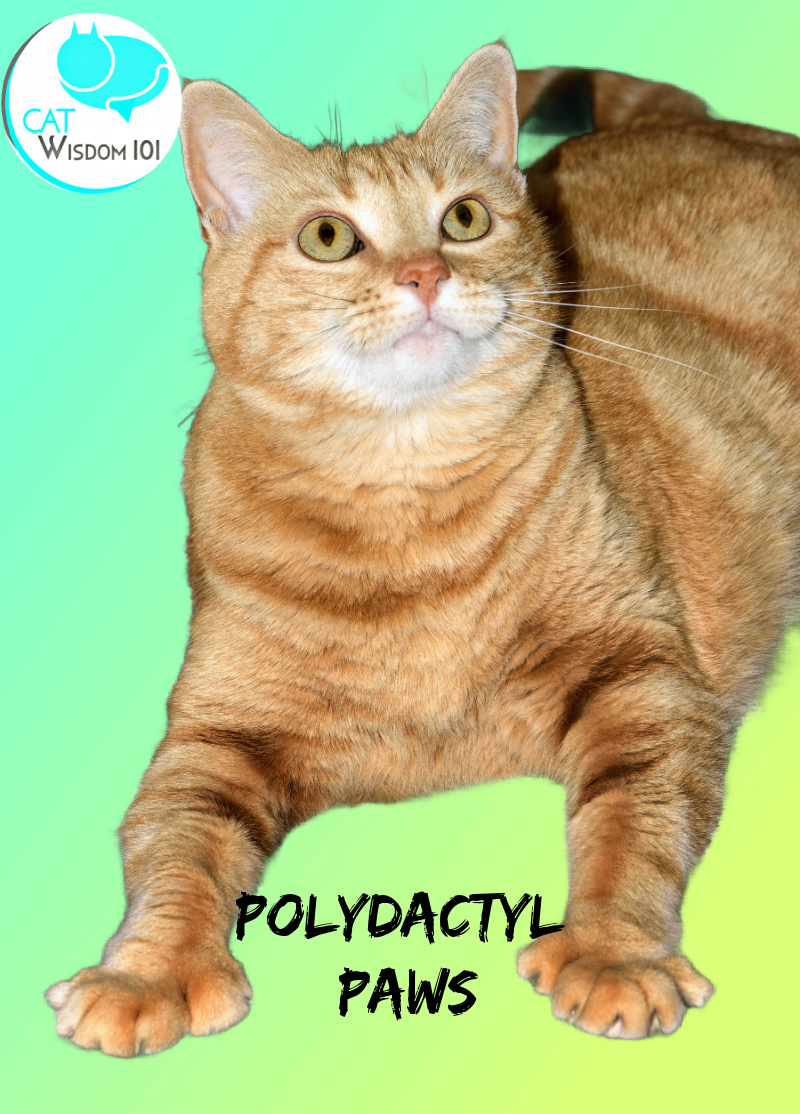
The polydactyl gene is a dominant trait that can be passed down through generations of cats. It’s particularly common in the Eastern US, with the arrival of polydactyl cats tracing back to New England in the 1600s.
Ship cats with extra toes were prized by sailors for their extraordinary climbing and hunting abilities on ships. ( More about that later!).
The distinct polydactyl mutation is also found more frequently in certain breeds like the Maine Coon. Today, polydactyl cats are beloved for their unique appearance and the endearing way their big “mitten paws” make them seem just a bit more human-like.
Polydactyl Cats in Pop Culture
These special-pawed felines have been featured in books, TV shows, and of course social media that highlight just how charming their extra toes can be:
• Dr. Seuss’ classic children’s book “The Cat in the Hat” depicts the mischievous cat with polydactyl-looking paws.
My favorite polydactyl cat (don’t tell Otto!) is Sophie. She is featured in my book, Black Cats Tell All: True Tales and Inspiring Images. You can enjoy her special beauty @sophie_the_model
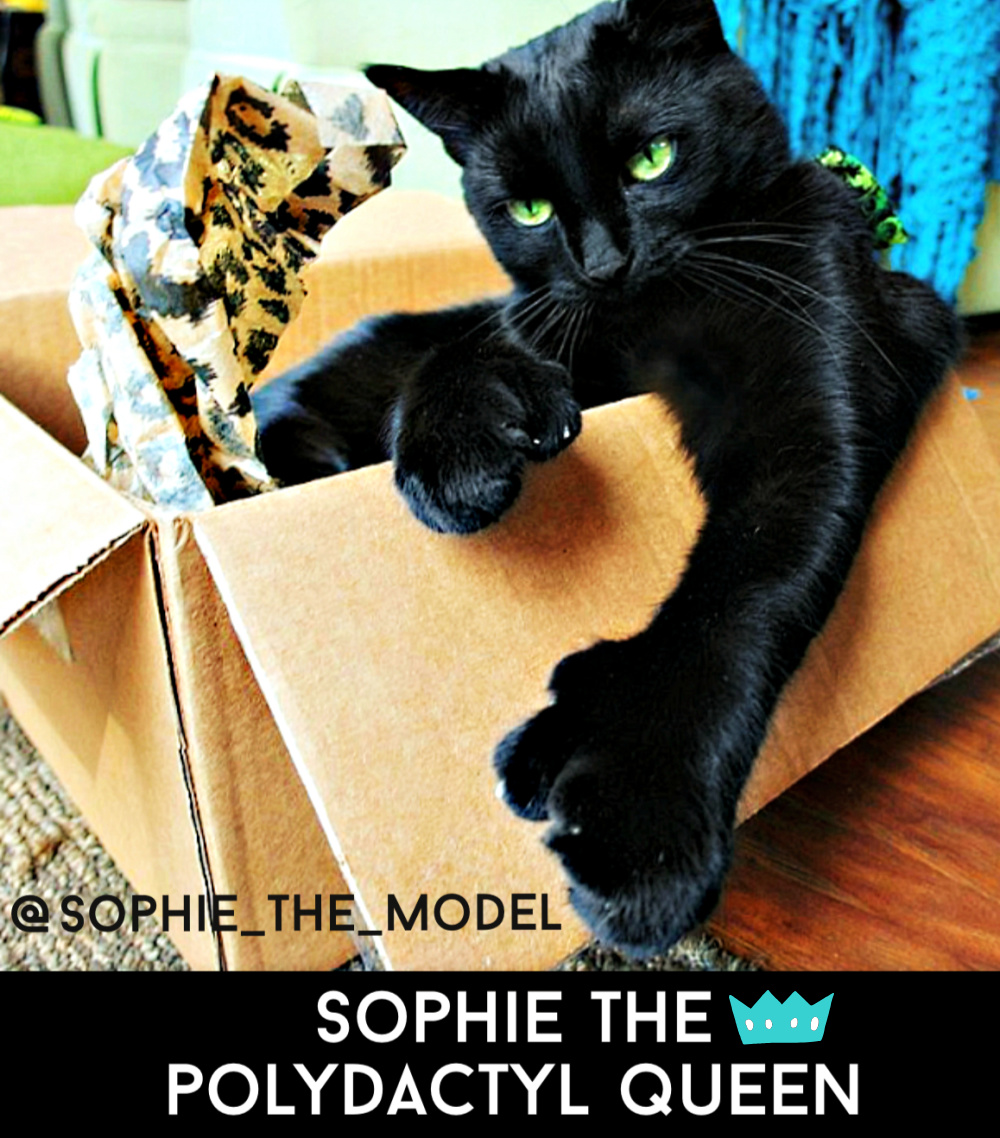
• Ernest Hemingway was a famous polydactyl cat lover who helped proliferate their populations in Key West, Florida.
Fun Fact: Polydactyl cats are also called Hemingway cats. Ernest Hemingway was given a white six-toed cat by Captain Harold Stanley Dexter. The kitten was from a litter of the captain’s cat Snowball, who also had six toes.
Hemingway’s son named their new kitten Snow White AKA Snowball.
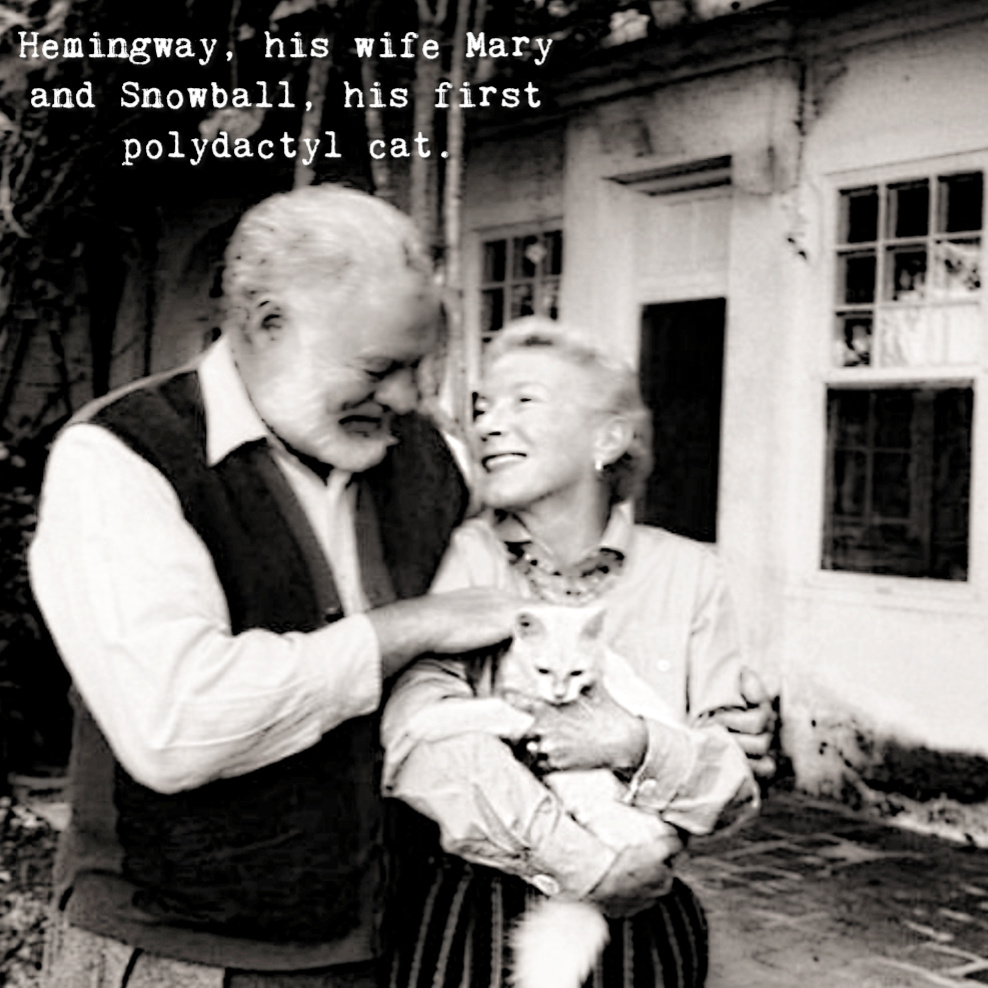
President Roosevelt was a huge animal lover with a menagerie in the White House including a polydactyl cat named Slippers.
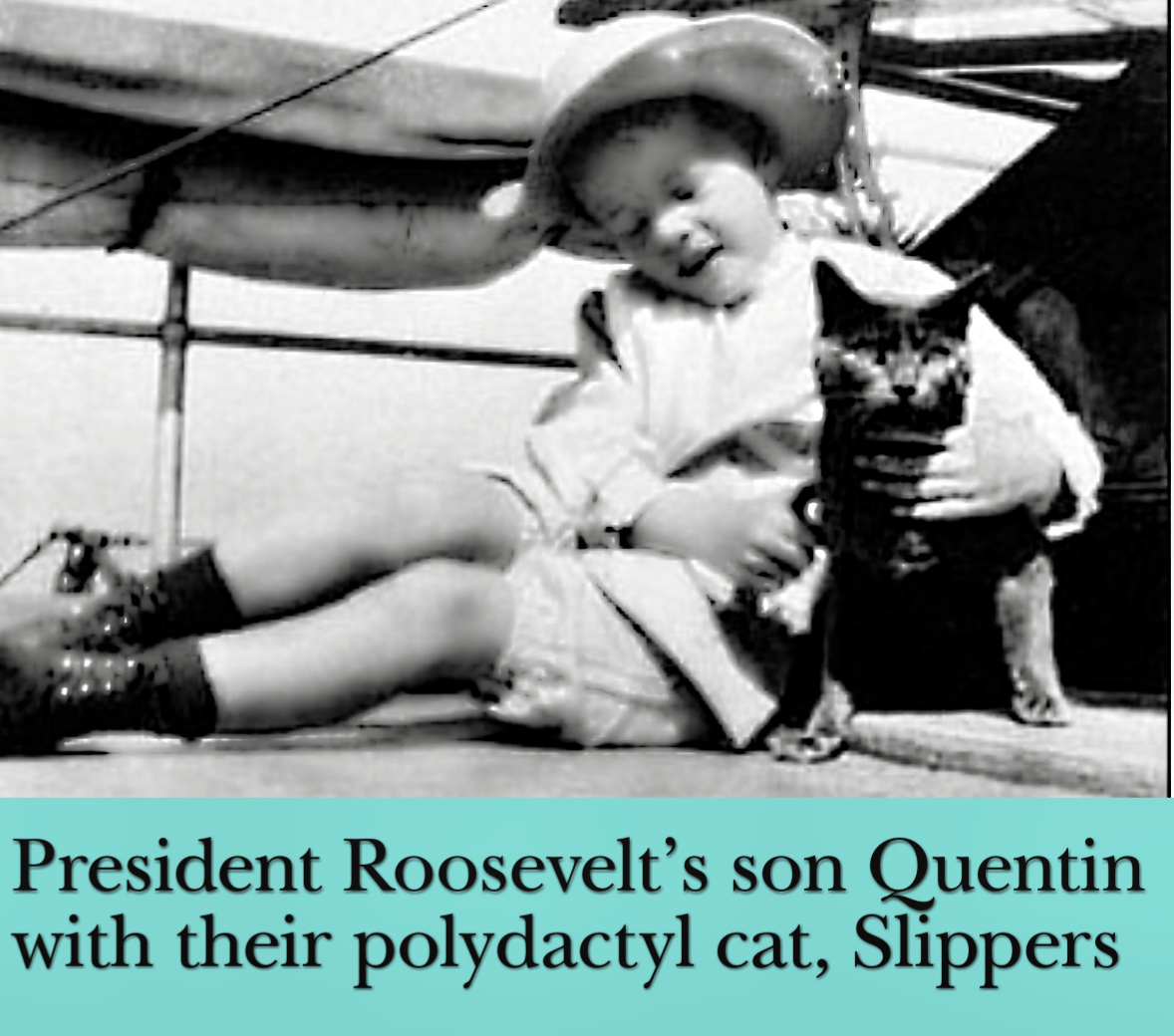
A Nautical Legacy
One of the reasons polydactyl cats have maintained their genetic lineage is due to their widespread popularity among sailors and pirates centuries ago. With their extra toes providing increased gripping ability, polydactyl cats were prized by sea captains (and pirates) for their unparalleled mousing skills on ships.
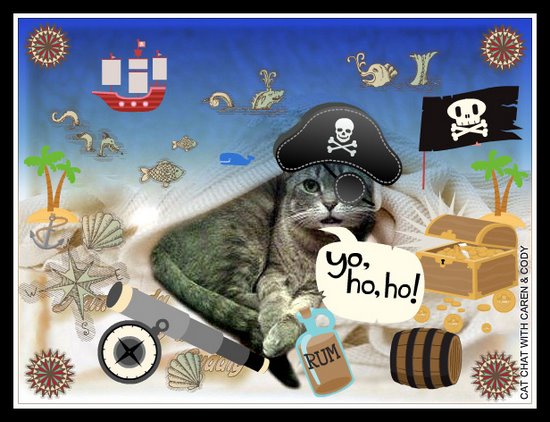
As efficient hunters, these felines helped protect valuable food stores and cargo from being contaminated or destroyed by rodents. Their dexterity also made them exceptional climbers, allowing them to swiftly scale riggings and freely roam ships in pursuit of their prey.
By the 19th century, polydactyl cats proliferated among North American ports and coastal towns as they frequently departed and returned to shore with naval shipping crews. One famous polydactyl line traces back to New England, where sailors brought the cats ashore to help control rodents in seaside communities.
The cats’ multi-toed “mutt-paws” proved so advantageous for nautical needs that many a superstitious sailor considered them amazing good luck charms to have aboard.
British captain’s logs reveal that polydactyl ship’s cats were even given special treatment and accommodations normally reserved for human crew!
So while their mitten-like paws are adorably distinct today, polydactyl felines have a rich seafaring legacy. Their genetic quirk proved extremely practical – and some say fortunate – for controlling mice and rats that could damage or contaminate food supplies and cargo on long ocean voyages.

What cat breeds are more prone to polydactyly?
Maine Coon
This large, semi-long-haired breed originated in Maine and is one of the cat breeds most commonly affected by polydactyly. Some sources estimate that around 40% of Maine Coons are born with extra toes. Their ancestors were working cats on farms and ships, where the polydactyl gene provided an advantage.
American Polydactyl
This is not an official breed, but rather a breeding line of domestic cats specifically bred to have extra toes. Allowed polydactyly numbers vary, but these cats typically have 6-7 toes per foot.
Pixie-Bob
Developed from bobcat hybrids, the Pixie-Bob breed has higher instances of polydactyly than typical domestic cats. Their large paws and wild lineage make the polydactyl mutation more likely.
Norwegian Forest Cat
Another hefty, semi-longhair from rugged roots, the Norwegian Forest Cat has a genetic propensity toward polydactyly passed down from their hardy ancestors.
Black and Tuxedo Cats
Otto, a tuxedo is a prime example.
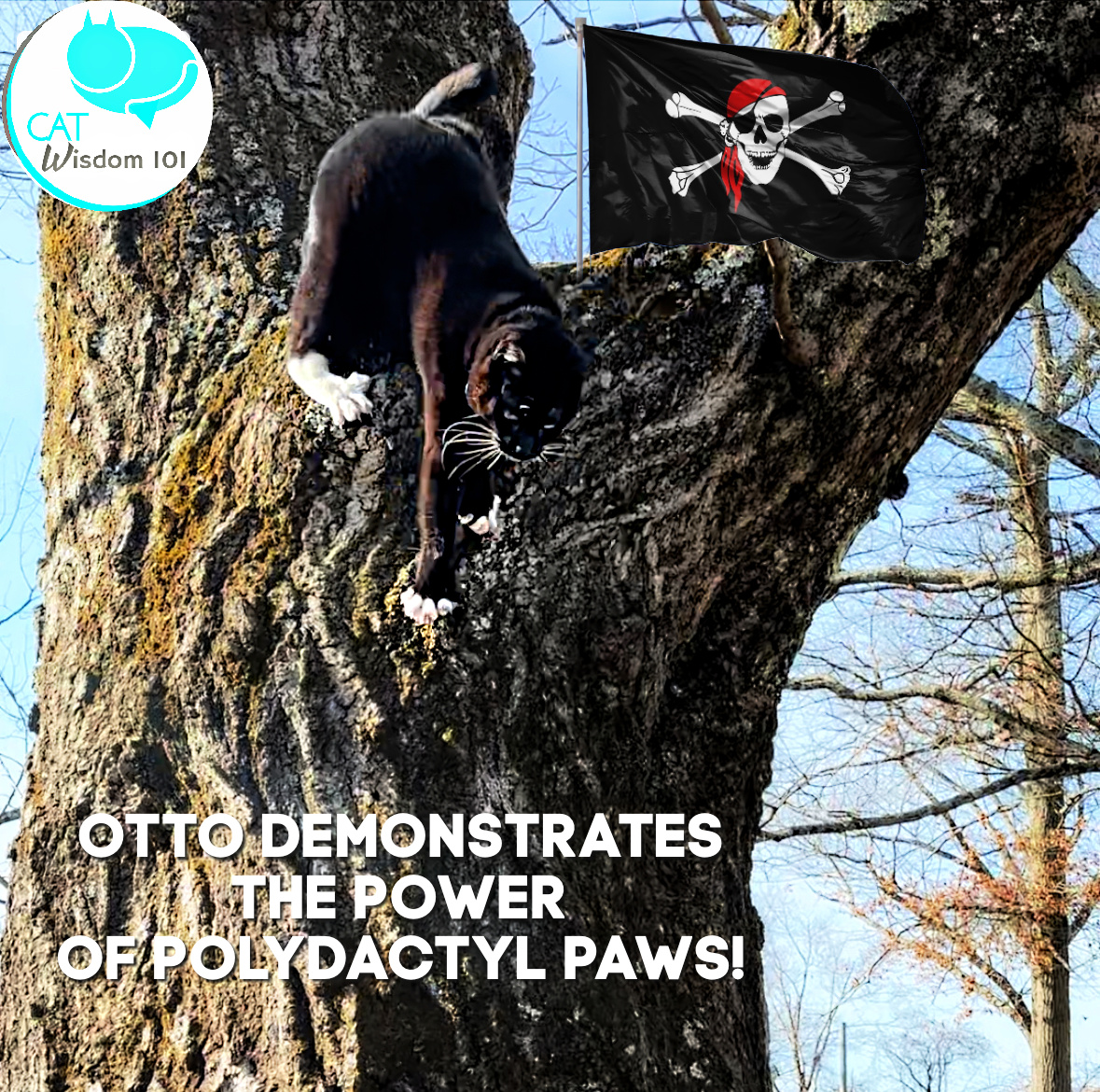
Solid black cats, as well as tuxedo cats (black with white markings), appear to be more likely to inherit the polydactyl gene than cats of other coat colors and patterns. While exact figures are difficult to find, many polydactyl rescues and owners report a disproportionate number of polydactyl cats being solid black or tuxedo.
Some theorize that the polydactyl genetic mutation may have arisen from the same genetic line that produces solid black or piebald coat patterns. This could explain the prevalence of multi-toed black and tuxedo cats over time.
Others point to the historical significance of ship’s cats, many of which were solid black to blend in aboard ships at night for effective mousing. As polydactyl cats became prized for their hunt skills, the trait may have been inadvertently reinforced in the black seafaring population.
Regardless of the reason, the aesthetic combo of sleek black fur and adorable polydactyl “thumb” toes has made these cats extremely popular. Polydactyl-focused rescues and breeders often have a large percentage of black and tuxedo cats available compared to other colors.
While polydactyly is usually harmless, ethical breeders screen for extreme cases with mobility issues. Overall, the quirky “mitten feet” remain an endearing, functional trait in many pedigreed and mixed-breed show and household cats alike.
Health and Grooming of Polydactyl Cats

While polydactyly is a mostly harmless genetic condition, there are some important care considerations to keep polydactyl kitties healthy and comfortable:
Nail Trims
With more nails than typical cats, polydactyl kitties need more frequent nail trims every 2-3 weeks. Overgrown nails can ingrow painfully into the toe pads or cause snagging. Using proper cat nail trimmers is essential.
Paw Grooming
The extra toes create more areas for dirt, debris, and moisture to get trapped between the toes. Regular gentle grooming with a damp cloth or mild wipes helps prevent matting, stuck litter, or bacterial infections in this area.
Monitoring for Issues
Some polydactyl cats may need periodic x-rays to check for deformities or malrotation of the extra digits, especially if they cause mobility issues or pain. Ingrown nail segments, cysts, and arthritis are also more common with polydactyly.
Weight Management
The additional weight and awkward foot alignment in some polydactyls puts extra strain on their joints. Keeping polydactyl kitties at a lean, healthy weight is important to prevent arthritis or injuries.
Accommodations For Extreme Cases
Providing ramps, low surfaces, and prevention of high jumps can also help polydactyl cats with mobility challenges navigate more easily. Soft bedding cushions weight distribution on their unusual paw structure.
While most polydactyls live happy, healthy lives like other cats, their unique little “toes-en” require some additional monitoring and grooming TLC. With proper precautions, these special-pawed felines make wonderfully unique companions!
What’s in a name?

Polydactyl cats go by quite a few fun and descriptive nicknames due to their distinctive paws! Here are some of the most common nicknames for these multi-toed felines:
- Mitten Cats/Kittens or Murder Mittens
This is one of the most popular nicknames, referring to the cute mitten-like appearance of their extra-toed paws.
- Thumb Cats/Kittens
Their dexterous paws with opposing “thumb” toes give them an almost human-like hand quality.
- Boxing Cat/Kitten
The wide paw spread makes it look like polydactyl cats are ready to put up their “dukes” and box.
- Candy Cats/Kittens
Their toes can sometimes resemble tootsie rolls or pieces of candy!
- Greebles
A silly, made-up name using the word “grebe” which means having an abnormal number of digits.
- Poly Cats/Kittens
A shortened version using “poly” to refer to their polydactyl trait.
- Digits
Another nickname simply referring to their extra digits.
- Mutants
While not the most flattering term, some jokingly call them “mutants” playing off their genetic mutation.
- Ship’s Cats
Nods to their historical popularity as mousers on ships and with sailors.
- And last but not least: Hemingway Cats
The writer Ernest Hemingway helped proliferate polydactyl cats in Key West, Florida.
No matter what you call them, those adorably wide, radiant paws are the distinctive feature that makes polydactyl kitties so unique and beloved! Their interesting names are just one part of their multi-toed charm.
Happy Polydactyl Cat Day! May 12 is also Mother’s Day and our 14th blogoversery!
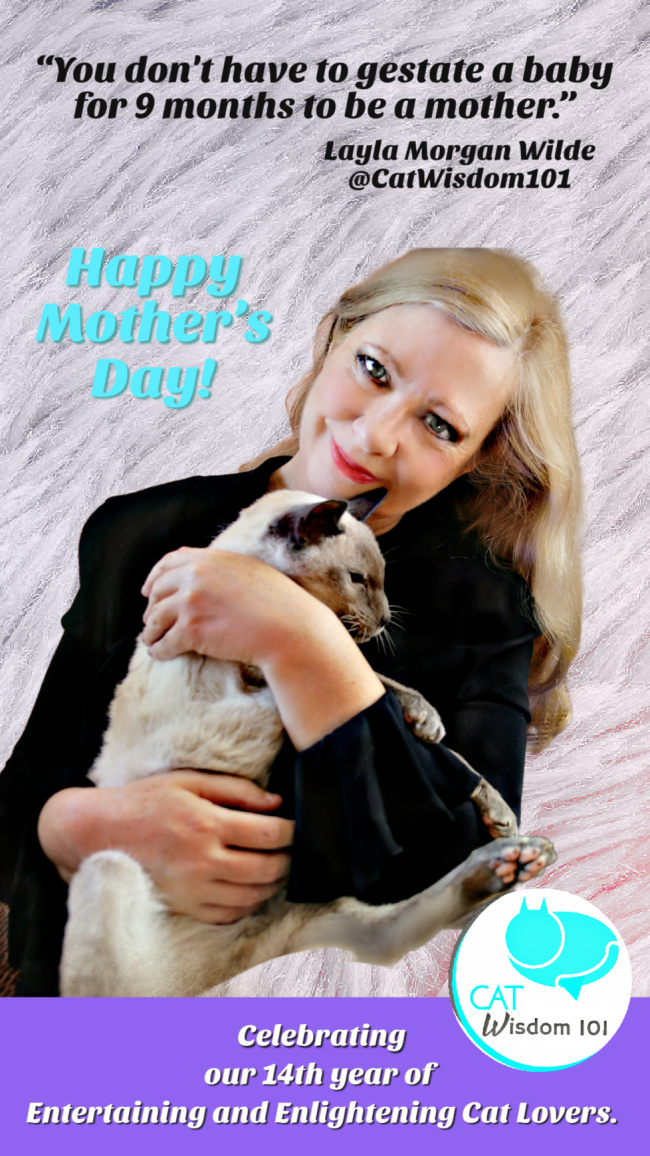
Much love from Layla, Odin and Otto
I’d love to hear about your experience with polydactyl cats.


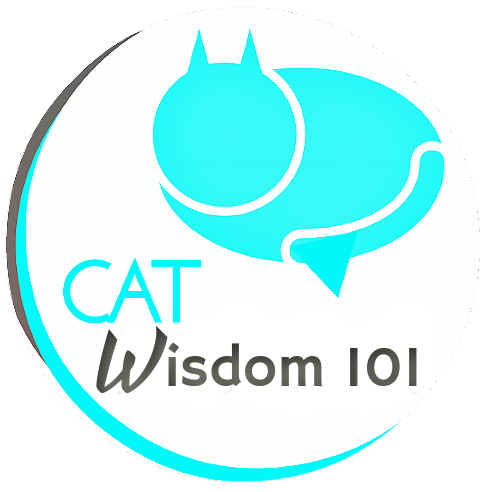
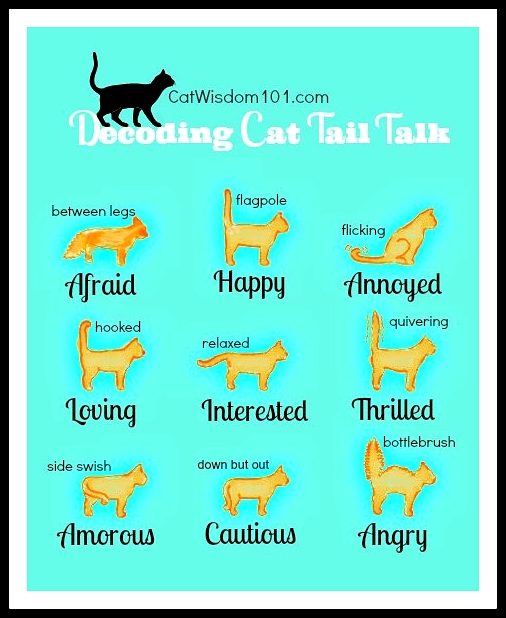
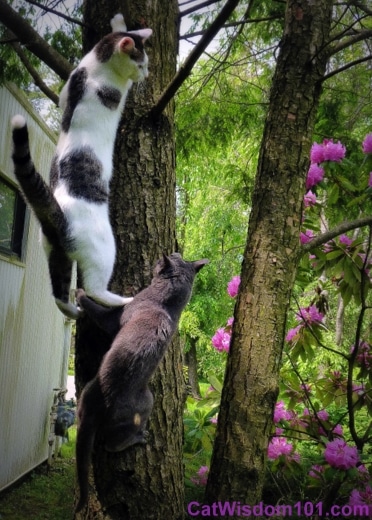

10 Comments
meowmeowmans
We’ve had quite a few polydactyl cats come through PAWS. Those big mitts are always so neat!
Happy Mother’s Day, Layla! XO
Layla Wilde
That’s great to hear. I wonder if they were mostly black?
Ellen J Pilch
My Polar Bear was polydactyl. Happy Mother’s Day! XO
Layla Wilde
Aw, I love that name too!0
Amy Harlib
Fiona, the cat I had from 2004-2019 (deceased) was a gorgeous tortie Maine Coon/Persian mix fluffy rescue kitty and polydactyl with 6 toes on her front feet, the only extra-toe cat I ever had.
I miss her just as I miss all the cats I’ve had over my lifetime who have gone to The Rainbow Bridge.
Delightful post!
Layla Wilde
Thanks Amy! Fiona must have been gorgeous!
Diane
Otto is so cute and a good spokes cat. I always learn something new here.
Layla Wilde
Thanks, Diane! I’m glad to hear I’m doing my job!
Olivia
Fantastic post! I have one poly with 6 on one foot an 8 on the other.
Layla Wilde
Thanks so much and kisses from Ottoxxx